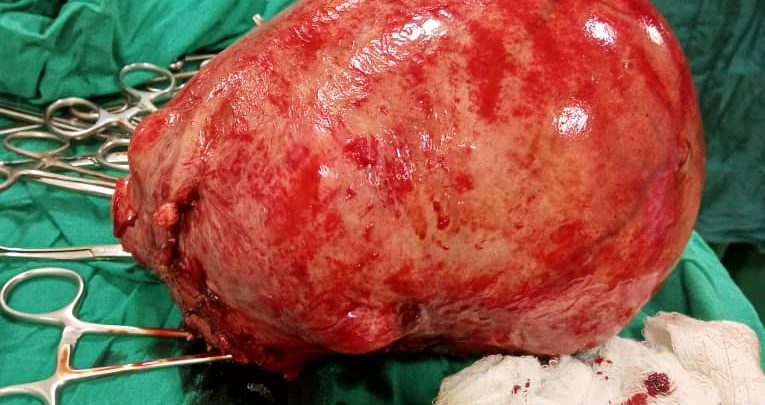In a medical breakthrough in Uganda, doctors have successfully extracted a massive uterine fibroid, weighing approximately 3.2 kilograms, from a woman in Kampala. Dr. Emma Sserunjogi who led the surgical team, shared, “We removed this substantial fibroid, weighing 3.2kg. Normally a baby weighs between 2.5kg and 4kg, so you can imagine how significant it was.”
Uterine fibroids, also known as “uterine leiomyomas,” are noncancerous tumors that can vary in size, ranging from as small as a seed to forming a sizable mass that distorts and enlarges the uterus, as explained by the Mayo Clinic.
While fibroids often remain asymptomatic the Cleveland Clinic notes that some individuals may experience symptoms such as excessive menstrual bleeding, pain during intercourse, frequent urination, or a sense of fullness in the lower abdomen.

Dr. Sserunjoji revealed that the fibroid removal surgery took place over the weekend. He identified several factors contributing to the development of fibroids including a nulliparous uterus (one that has never carried a pregnancy), early menarche, overweight or obesity, late menopause, and genetic predispositions.
Notably, Uganda achieved a significant milestone in 2022 with its first successful Fibroid Embolization procedure. This groundbreaking feat was a collaborative effort between South African Doctor Dr. Josiais Padi from Merit International South Africa and Ugandan Doctor Dr. Hassan Kabiito from the International Hospital in Kampala (IHK) at IHK in Kampala.

Fibroids are prevalent in women, particularly those of African descent, and many reproductive-age women in Uganda grapple with this condition. Dr. Kabiito emphasized that the misconception that surgery is the sole solution to fibroids persists among patients.
He highlighted the availability of a non-surgical, minimally invasive procedure with a quicker recovery time called uterine fibroid embolization. This innovative technique involves targeted cutting off of blood supply to a specific part of the body, presenting a viable alternative to traditional myomectomy surgery.









